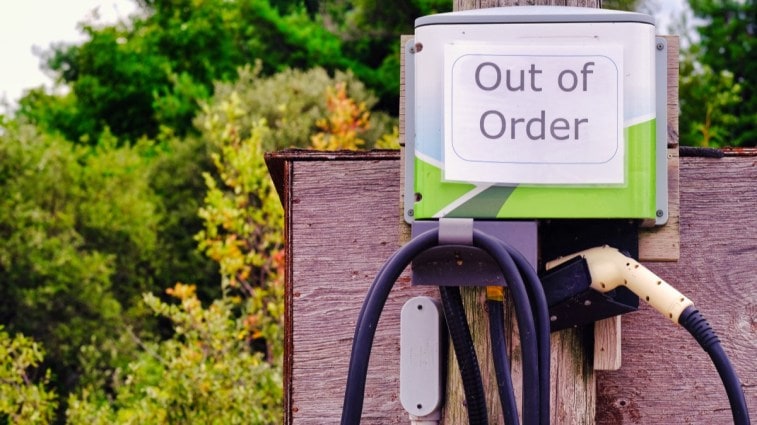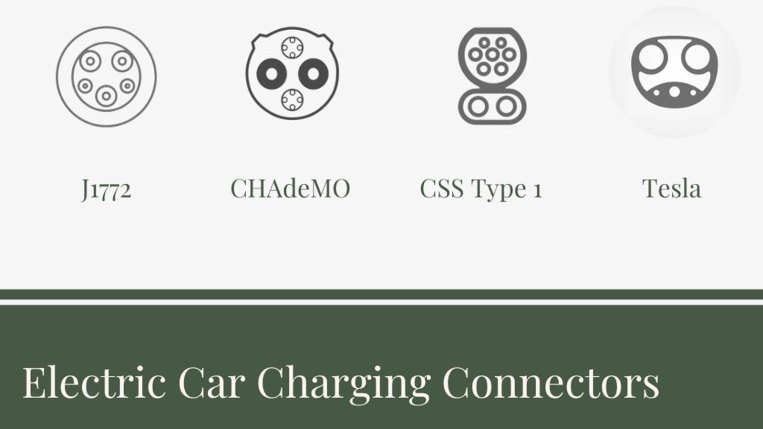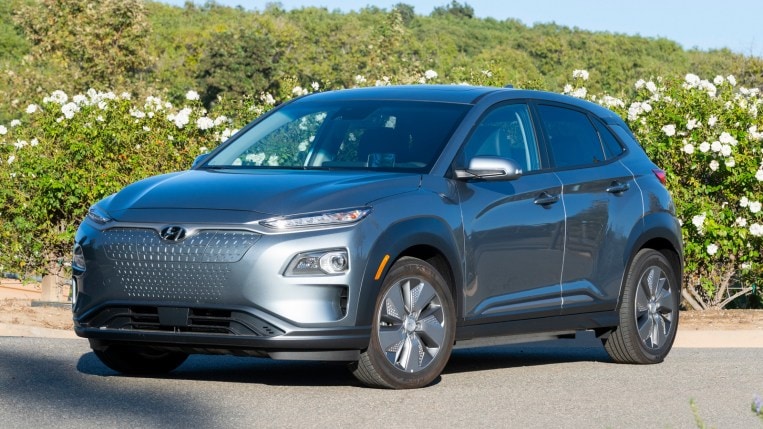Quick Facts About Buying the Right Electric Car
- Fully electric cars use no gasoline. You can also find hybrids or plug-in hybrids, both of which use gas.
- Buying an EV means making a mental shift in thinking about how you refuel your car. The good news is most EV charging gets done at home.
- There are pros and cons of buying an EV. Range and infrastructure continue to be limitations.
Electric cars will drive the future of the automotive world. Because many automakers plan for an all-electric future, there is little doubt in the industry that most cars Americans buy 15 years from now will be electric vehicles (EVs).
But we live in the present. And years of infrastructure got built around the assumption that we’ll all drive gasoline-powered cars. Charging stations and electricity policies necessary to make owning an EV even more effortless than owning a gasoline-powered car will take time. The country is in the early stages of building them.
So, we know of good reasons to believe you’ll eventually own an electric car. But is now the time? Could an EV be right for you? You’re probably reading this because you know it’s a complicated question. We’ll break down the issues and the current state of the EV market for you.
- What Is an EV?
- Are EVs Really Going to Replace Gas-Powered Cars?
- How About EV Infrastructure?
- Can I Charge My EV from Any Plug?
- EV Benefits
- EV Limitations
- EV Generations
- Government Programs Offer Incentives
- Current and Upcoming EVs by Class
What Is an EV?
An electric vehicle is a car that uses electricity instead of gasoline to provide the energy it uses to move.
When researching which electric car to buy, you may see the term “electrified vehicles.” That typically does not refer to cars that use only electricity, but rather cars powered by at least some electricity to provide the energy they need to move. The exception is Genesis. The carmaker calls some of its fully electric vehicles electrified, like the Genesis Electrified GV70.
What Is a Hybrid?
Hybrid cars use both electricity and gasoline. They run on both a gasoline engine and a small electric motor. They use their electric motor to get up to a certain speed, after which the gasoline engine takes over. Using gasoline for only part of their power makes them more fuel-efficient than regular gasoline-powered cars.
RELATED: What Is MPGe? Everything You Need to Know
The Hyundai Elantra, for instance, is available with a gasoline-only powertrain or a hybrid powertrain. In gasoline-only form, it gets an EPA-estimated 32 mpg in the city and 41 on the highway, depending on the model. In the hybrid form, it gets 51 mpg in the city and 58 mpg on the highway. But hybrids are not EVs. This guide does not cover hybrid cars.
What Is a Plug-in Hybrid?
Plug-in Hybrid (PHEV) cars also use both electricity and gasoline for power. But they have a larger battery and a more powerful electric motor. They can travel under electric power up to their full speed. A PHEV can use electricity alone until its battery is nearly depleted. It then turns on its gasoline engine and begins to function as a hybrid. In practical terms, owning a PHEV is much like owning an EV. But PHEVs can take long trips when fueled with gasoline.
For instance, the 2025 Chrysler Pacifica PHEV can travel up to 32 miles on electric power alone. The average American drives less than 40 miles a day. So many Pacifica PHEV owners can effectively operate an EV on an average day. But they can take longer road trips without worrying about their car’s EV range and use gasoline for greater distances. A handful of PHEVs like the Pacifica also qualify for tax incentives of $7,500 that help Americans buy electric cars, lowering their costs versus traditional hybrids. This guide will not cover PHEVs.
Fully Electric Cars Use No Gas
Electric vehicles do not have internal combustion engines (ICE). They operate with large batteries, usually placed underneath the car’s floor, that store all their power. They use small electric motors attached directly to their axles that do the job of an engine.
EVs travel with limited range because their batteries can deplete. Recharging their batteries takes longer than refilling a gas tank. But even the shortest-range EV on the market today drives many times longer than the distance most Americans do each day. As technology improves, charging batteries keeps getting faster.
RELATED: 5 Fastest-Charging Electric Cars
Are EVs Really Going to Replace Gas-Powered Cars?
Electric vehicles just might replace gas-powered cars, but the transition will not be immediate. California and other states like Massachusetts, Maryland, and Washington plan to ban sales of new gasoline-powered vehicles by 2035. Other states may soon follow.
However, broader adoption will take time. According to Kelley Blue Book parent Cox Automotive, electric vehicle sales made up an 8% share of the total new car market in 2024, up from 7.6% in 2023 and 5.9% in 2022. Manufacturers offered five electric car models to buyers in the United States eight years ago. Today, you can find nearly 100 configurations of models from almost two dozen automakers.
There’s a growing trend toward electric pickups with the release of the Ford F-150 Lightning, Rivian R1T, Chevrolet Silverado EV, Tesla Cybertruck, and GMC Hummer EV pickup. The Ram 1500 REV is also waiting in the wings.
Automakers made grand plans several years ago as excitement for EVs gained momentum. Some industry giants pledged to have all-electric lineups by 2035, 2030, or sooner. However, the challenge of meeting government regulations, lowering prices, and balancing consumer demand prompted some manufacturers to scale back their ambitious goals. Here’s a list of what some of those plans include:
- Volkswagen: The world’s largest automaker previously pledged to build a lineup of almost all electric cars by 2030 but now plans to adjust the EV strategy and expand its PHEV lineup.
- General Motors: America’s largest automaker scaled back its EV production and sales target.
- Volvo: The manufacturer adjusted its 2030 EV sales target to include hybrid models.
So, yes, manufacturers take EVs seriously. Fully electric vehicles could probably replace most gasoline-powered cars in the coming decades, just not as quickly as initially thought.
RELATED: Electric Car Companies Guide
How About EV Infrastructure?

Buying an EV means making a mental shift in thinking about how you refuel your car.
Drivers became accustomed to filling up their gas tanks while traveling. Most EV charging, however, gets done at home. According to the U.S. Department of Energy, about 80% of EV charging happens at home.
PRO TIP: “When I test electric cars, I mostly charge them at home. However, I also found it easy to quickly charge up at a Level 3 DC fast charger when doing grocery shopping locally. At public fast chargers, it took about 18 minutes for our long-term Kia EV6 to get charged to 80%. A year later, the EV6 still charged in the same timeframe at a fast charger.” — Renee Valdes, lead advice editor of Kelley Blue Book.
Charging at Home
You can charge an EV from a simple household outlet. But, for efficiency, charging your electric car from a faster Level 2 at home is what most buyers prefer. You can also charge at a public Level 2 or Level 3 DC fast charger (more on that in a moment). Most car dealers selling EVs can coordinate installing Level 2 chargers at your home if you own it. Some public utilities offer special incentives for installation. Level 3 chargers are cost-prohibitive to install in residential settings
RELATED: Everything You Need to Know About EV Charging Stations
Charging a vehicle is more challenging if you live in an apartment building. However, many corporate apartment owners have begun installing fast chargers. Even if yours hasn’t, building owners might be willing to upon request. It makes the building more attractive to renters. In many cases, local electric utilities can help defray installation costs.
Public Charging Stations
Having access to chargers in your community is convenient. But right now, America operates more gas stations than electric charging stations. One day, those numbers will switch places. According to NACS, the leading industry association for convenience stores and fuel retailers, about 120,000 convenience stores sell fuel. Roughly 20,000 other locations are gas-only stations, grocery stores with fueling centers, etc.
U.S. Department of Energy data shows that at least 69,720 public EV charging stations exist as of this writing. Of those, the vast majority are Level 2 chargers. Thanks to public- and private-sector funding, the number of public EV chargers doubled from 2021 to 2025. Earlier this month, the Federal Highway Administration announced grant funding for projects that will deploy 11,500 EV charging ports and hydrogen and natural gas fueling infrastructure across 27 states.
A patchwork of companies operates charging networks around the country, which can lead to reliability problems. One of the largest networks, Electrify America, is slowing its expansion to devote resources over the next couple of years to improving reliability. Meanwhile, eight of the world’s largest automakers teamed up to announce a coast-to-coast charging network, known as IONNA. Tesla’s Supercharger network is the largest charging web and is highly rated for its reliability.
It’s also worth noting that charging infrastructure in your area may be better than you think. A recent analysis from Zutobi, a company that provides driver’s education and training materials, found that the three states with the greatest number of chargers per EV are, believe it or not, Wyoming, North Dakota, and West Virginia.
Can I Charge My EV From Any Plug?

Previously, nearly every new EV for sale in the U.S. included a charging unit that could be plugged into a standard 110-volt household outlet. Today, those portable chargers are sometimes offered as optional equipment or acquired as an aftermarket accessory. Level 1 charging is the slowest method, providing up to five miles of range per hour, and is rarely used as a primary source of recharging.
Many EV owners choose to install a so-called Level 2 charger at home. A Level 2 charger requires a 240-volt electrical supply, the type of connection used for a clothes dryer. An electrician can install a 240-volt outlet in most homes, and dealerships will often arrange installation as part of purchasing an electric car. A Level 2 charger is much faster.
RELATED ARTICLE: How Long Does It Take to Charge an Electric Car?
Some public chargers are faster Level 3 fast chargers. These use direct current. It’s impossible to give an accurate generalized estimate for all EVs because each vehicle can accept electricity at a different rate. But some electric cars can charge their battery up to 80% from a Level 3 charger in about 20 minutes.
Types of Plugs

There are several different types of plugs on electric cars sold in the U.S. this year, and using a public charger can require you to find the right kind of connector. The most common connection is the J1772, used for Level 1 and Level 2 charging.
Most European- and American-made electric cars use a CCS Type 1 plug. Japanese-built EVs use a plug design called CHAdeMO, though it’s being phased out. Most public charging stations can accommodate both.
For its Supercharger network, Tesla uses a proprietary plug design known as the North American Charging Standard, or NACS. Tesla sells its cars with an adapter that allows them to use chargers from other brands.
Currently, other brands can use only a select number of Tesla Superchargers. Tesla plans to make at least 7,500 of its chargers available to all EVs. Cars with CCS and CHAdeMO plugs will need a special adapter to use Tesla Superchargers.
MORE: An EV Charger Buying Guide: See All Your Options.
EV Benefits
Though electric cars remain a small percentage of the vehicles on American roads, their numbers are growing faster than any other type of car thanks to several factors.
1. Fuel Cost
Electricity costs less than gasoline. Because electricity rates and gasoline prices fluctuate, it’s impossible to give you a single figure explaining the cost difference between using gas and electricity for your driving needs. But most drivers would spend less than a quarter of their annual gasoline budget to drive an EV instead.
Read an analysis in our article How Much Does It Cost to Charge an EV?
2. Maintenance and Repair Costs
EVs use fewer moving parts than gasoline-powered cars. An analysis by We Predict found that EV owners spend about $7 for every $30 a gasoline car owner spends on maintenance. And while costs to repair an electric car were higher, study authors noted that electric vehicles experienced fewer problems that required repair and that repair costs continue decreasing as more mechanics become certified in repairing electric cars.
3. Environmental Benefits
One of the most compelling reasons to buy an electric car is to help reduce your impact on the climate. Recent studies have shown that while building a new car has an immense environmental impact, EVs are better for the environment after just a few years of ownership.
4. Improved Driving Experience
Gasoline engines build up their power gradually, beginning when you step on the gas pedal. Even the fastest gasoline engines take a few seconds to reach full torque.
Electric motors make 100% of their power available at all times.
This means that electric cars accelerate dramatically faster than their gasoline-powered counterparts.
It’s difficult to overstate the impact of electric power on automotive performance. Thanks to the rise of electricity, the Kia EV6 reaches zero-60 mph faster than even Lamborghini or Ferrari had achieved a decade ago.
MORE: The Coolest Electric Car Features You’ll Want in the Future
EV Limitations
There are still good reasons for some car buyers to look elsewhere, including the following:
1. Range
Some people routinely drive farther than an EV can go on a single charge.
Most of us don’t. The average American drives less than 40 miles per day. The Nissan Leaf, the least-expensive and shortest-range EV for the 2025 model year, has a 149-mile range. That’s more than three times the average daily driving distance on a single charge. The longest-range electric vehicle, currently the Lucid Air, can travel up to 516 miles before recharging.
However, most EVs get below 300 miles of range per charge. Still, road trips are doable in EVs, even when traveling long distances in the winter.
But an EV isn’t practical for those who routinely drive long distances. Battery technology is constantly improving, and some technologies currently in development (like solid-state batteries) could provide EVs with dramatically more range in several years.
READ MORE: Electric Car Range: Everything You Need to Know
2. Infrastructure
You can find far more public chargers in densely populated areas than in rural communities, though most EV charging is done at home. While infrastructure is improving, it still has limitations, including broken chargers and fewer locations than gas stations.
3. Towing and Hauling
Manufacturers have begun introducing electric trucks and SUVs. While carmakers have published range claims, range drops significantly when the vehicles haul or tow a heavy load. Electric trucks are not practical heavy work vehicles just yet.
4. PHEVs Offer Most of the Benefits, Few Drawbacks
Plug-in hybrids provide many of the same strengths as electric cars without some of the limitations. A PHEV can functionally serve as an electric car for the average driver on an average day, while also allowing owners to take long road trips without renting or borrowing a different vehicle.
They can also refuel at both gas stations and charging stations. If you’re unsure whether you can live with the compromises of an EV, a PHEV might be right for you.
5. Cost
Most electric vehicles cost thousands more than their gasoline equivalents. Government incentives help lower the cost of some eligible vehicles but often don’t make the two equal investments.
This factor could ease with time as EVs become more common. Every new technology grows less expensive as it gets mass-produced. A few EVs have seen their prices slashed, including the Tesla Model Y, the Volkswagen ID.4, and the Chevrolet Equinox EV.
RELATED: Ford Answers Tesla With Big Price Cut on Electric Mustang Mach-E
EV Generations

First-Generation EVs — Built From Gas-Powered Cars
Some electric vehicles are modified versions of gasoline-powered cars. The original Hyundai Kona EV, for instance, was based on and came after the gasoline version.
These EVs may feel more familiar to drivers and may be less expensive to repair because they share many parts in common with a more common electric car.
But they do not gain all the advantages of an EV because engineers have had to shoehorn electric drivetrain parts into spaces built for gasoline-powered cars.
Second-Generation EVs — EVs From the Ground Up

Automakers now design most EVs as dedicated electric cars. This allows new design possibilities. For instance, electric vehicles lack a traditional transmission, so a clean-sheet EV design does not require the traditional transmission hump separating the driver and passenger in a vehicle’s cabin. An electric vehicle’s moving parts can fit beneath the cabin floor and in the wheel wells.
This allows designers to create uniquely spacious vehicles. For instance, the Audi Q4 e-tron got built as a compact SUV. But the car offers almost as much passenger and cargo space as Audi’s larger, full-size Q7 SUV.
MORE: Our Favorite EV Safety Features and Brands That Offer Them
Government Programs Offer Incentives
The U.S. government’s electric car tax credit is the most well-known incentive program.
- Qualified electric car buyers can claim a federal income tax credit of $7,500 on select new EVs.
- For leases, the Internal Revenue Service lets dealers claim credits of up to $7,500 on EVs. The dealers can apply the credit to EV vehicle costs before setting lease terms, effectively lowering shoppers’ costs.
- Qualified used car shoppers looking to buy EVs older than two model years can get up to a $4,000 tax credit.
READ MORE: How Do Electric Car Tax Credits Work?
Some state and local governments offer incentives. For example, a substantial rebate in California offers up to $12,000 in rebates when purchasing a new EV. The initiative, called Cars 4 All, helps low-income buyers.
Also, some electric utilities offer rebate programs to help customers buy electric cars and install home charging stations. Electric companies are often happy to help you buy more electricity from them.
READ MORE: Electric Car Rebates and Incentives: What To Know by State
Current and Upcoming EVs by Class
Electric cars exist in virtually every class of vehicle. The list of available and upcoming EVs keeps changing quickly, as automakers introduced new models every month this year. The list includes:
Affordable Small Cars
Affordable Midsize Cars
Luxury Small Cars
Luxury Midsize Cars
Luxury Large Cars
- Audi A6 e-tron: Upcoming
- Genesis Electrified G80
- BMW i7
- Lucid Air
- Mercedes-Benz EQE
- Mercedes-Benz EQS
- Tesla Model S
Affordable Small SUVs
Affordable Midsize SUVs
- Ford Mustang Mach-E
- Hyundai Ioniq 5
- Kia EV6
- Volkswagen ID.4
- Nissan Ariya
- Toyota bZ4X
- Subaru Solterra
- Honda Prologue
- VinFast VF 8
- VinFast VF 9: Upcoming
Luxury Small SUVs
Luxury Midsize SUVs
- Audi e-tron
- Audi e-tron Sportback
- Cadillac Lyriq
- Genesis Electrified GV70
- Jaguar I-PACE
- Tesla Model Y
Luxury Large SUVs
Minivans
Full-Size Trucks
- Chevy Silverado EV
- Ford F-150 Lightning
- GMC Hummer EV Pickup
- GMC Sierra EV
- Ram 1500 REV: Upcoming
- Rivian R1T
- Tesla Cybertruck
Affordable Performance Cars
Luxury Performance Cars
Editor’s Note: This article has been updated since its initial publication.








